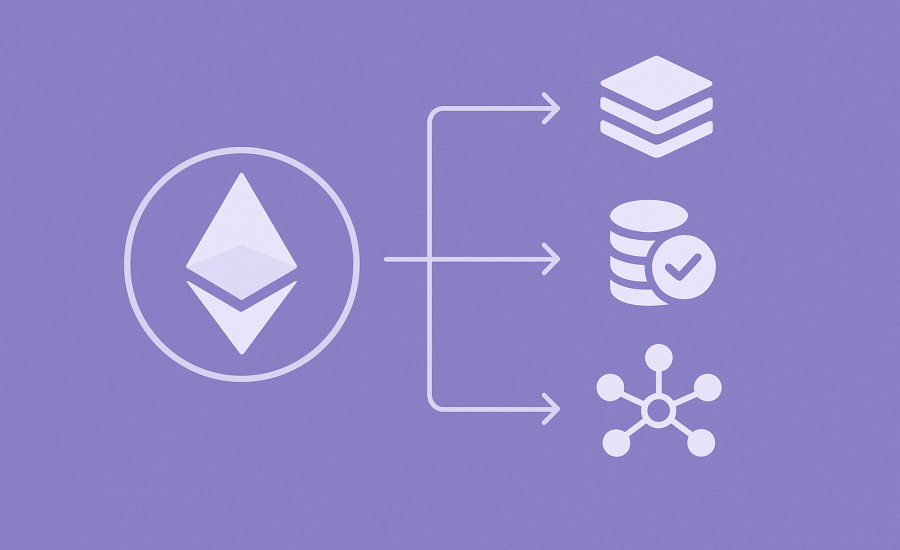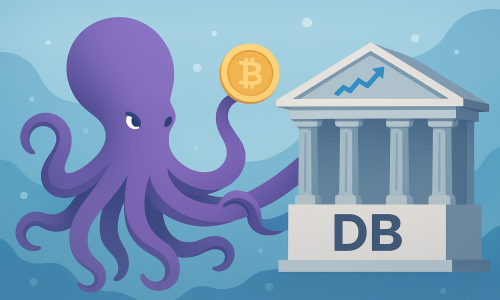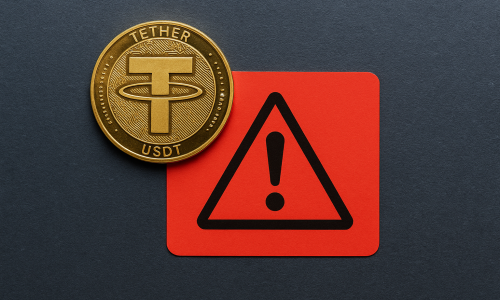Introduction
Since its inception, Ethereum has stood at the forefront of blockchain innovation, enabling a decentralized future through smart contracts and scalable dApps. Over the years, the Ethereum Foundation has demonstrated a clear and calculated vision, steadily guiding the protocol through technical evolution — from its Proof-of-Work origins to the Proof-of-Stake transformation known as The Merge.
With the successful implementation of the Dencun upgrade, Ethereum is now poised to enter a new phase. On July 5, 2025, the Ethereum Foundation unveiled its post-Dencun development roadmap, signaling ambitious plans for enhanced scalability, more accessible staking models, improved validator incentives, and broader ecosystem growth. This announcement marks a defining step in Ethereum’s maturity as a decentralized global platform.
Understanding The Dencun Upgrade: Setting The Stage
The Dencun upgrade, finalized earlier this year, was a significant milestone in Ethereum’s layered transformation. It brought together two previously separate upgrade efforts: Deneb, targeting consensus layer improvements, and Cancun, which focused on execution layer enhancements.
Key features included:
Proto-danksharding (EIP-4844): Introduced data blobs for Layer-2 rollups, dramatically lowering transaction costs and improving throughput.
Optimized gas usage: Adjustments to call data and blob space reduced fee pressure during periods of high activity.
Improved staking mechanics: Better support for validators and dynamic rewards alignment.
Dencun was designed not just to solve present challenges but to lay a foundation for scalable, energy-efficient, and secure Ethereum infrastructure. Now, with that groundwork in place, Ethereum’s post-Dencun roadmap aims to unlock its full potential.
Ethereum’s Post-Dencun Roadmap: Key Development Pillars
The Ethereum Foundation’s latest roadmap update outlines several thematic areas of focus for the coming months and years. Each aims to address specific gaps or growth opportunities within the Ethereum ecosystem.
Modular Scalability and Layer-2 Integration
While Dencun improved Ethereum’s data availability through proto-danksharding, the next phase will push toward full danksharding, enabling Ethereum to handle vast amounts of rollup data efficiently.
Post-Dencun development emphasizes:
Finalizing danksharding specs: Engineering efforts will refine the sharding system into a production-ready model.
EIP-4844 extension and blob market formation: Currently blobs are free; the roadmap aims to introduce a dynamic fee market for blob space, aligning economic incentives.
Deeper rollup integration: Projects like Optimism, Arbitrum, zkSync, and Scroll will see more seamless connectivity and security guarantees from Ethereum’s base layer.
These scalability enhancements are crucial to support mainstream adoption. Whether it’s gaming, DeFi, or NFT platforms, high-speed, low-cost Layer-2 solutions anchored to Ethereum are the future.
Evolution of Staking and Validator Architecture
The Ethereum Foundation has acknowledged some pain points in Ethereum’s staking system. While The Merge and the Beacon Chain have stabilized Proof-of-Stake operations, the network still wrestles with centralization concerns, complicated validator setups, and uneven reward distribution.
The post-Dencun roadmap proposes:
Single-slot finality research: A mechanism that could allow transactions to reach finality in a single block, reducing uncertainty and latency.
Simplified validator roles: New protocols may allow smaller or more casual participants to stake without running full validators.
Social slashing and accountability tools: Better systems for penalizing bad actors and incentivizing good behavior in validator sets.
This evolution aligns with Ethereum’s ethos of decentralized accessibility, ensuring that staking isn’t monopolized by large pools or centralized entities.
Strengthening Decentralization And Client Diversity
A key concern voiced by Ethereum core developers and community members is the rising dominance of a few validator clients, which could lead to central points of failure or influence. Ethereum’s roadmap prioritizes:
Client diversity incentives: Introducing mechanisms that reward nodes using minority clients, reducing the risk of correlated failures.
Simplified sync for light clients: A lighter sync mechanism will enable mobile devices and low-bandwidth users to verify chain data securely, increasing global accessibility.
Statelessness research: Progress on stateless Ethereum, where nodes do not need to retain full state history, could greatly reduce hardware requirements.
These infrastructure improvements are critical for Ethereum’s long-term resilience and censorship resistance, especially as geopolitical scrutiny of blockchain technology intensifies.
Ethereum And The Web3 Economy: Expanding Use Cases
Ethereum’s role as the foundational layer of Web3 remains its most compelling identity. The post-Dencun roadmap includes plans to enrich Ethereum’s utility by enhancing developer experience and onboarding new Web3 segments.
Areas of focus include:
Formalized account abstraction (ERC-4337): Enabling smart contract wallets with custom logic, recovery systems, and gas-fee sponsorship. This removes barriers for non-technical users.
Privacy-enhancing technologies: Exploring zero-knowledge proofs, zk-SNARKS, and private transaction layers to give users more control over their data.
On-chain identity protocols: Tools to help users and dApps establish reputation, credibility, and history across multiple decentralized applications.
Cross-chain interoperability: Ethereum developers are actively testing mechanisms to enable Ethereum-native tokens and smart contracts to interact seamlessly with other major chains (e.g., Solana, Cosmos, Polkadot).
This multi-dimensional expansion of Ethereum’s usability ensures that it remains the most relevant and flexible platform in the decentralized economy.
Governance, Funding, And Community Dynamics
The Ethereum Foundation’s post-Dencun announcement emphasized the importance of community-led development and sustainable funding.
Some key strategic points include:
Retroactive Public Goods Funding (RPGF): A mechanism where successful projects receive funding after impact is demonstrated, rather than before. This model incentivizes innovation without central control.
Public developer grants: Programs to bring in contributors from diverse geographies, backgrounds, and disciplines.
Protocol Guild initiatives: A formal community of Ethereum protocol contributors eligible for long-term rewards based on participation, fostering loyalty and alignment.
In a decentralized ecosystem, governance is as much about incentives as it is about decision-making structures. Ethereum’s evolution reflects its commitment to maintaining this balance as its protocol grows more complex.
Challenges Ahead: What Ethereum Must Overcome?
While the roadmap is ambitious and promising, Ethereum still faces several hurdles:
Rollup centralization: Many rollups still rely on centralized sequencers or multisigs. Encouraging more decentralized Layer-2 validators is a work in progress.
MEV (Miner Extractable Value): Even under Proof-of-Stake, MEV remains an issue. Ethereum researchers are exploring PBS (Proposer-Builder Separation) to mitigate this.
Regulatory uncertainty: With global regulators zeroing in on DeFi, staking, and stablecoins, Ethereum may face headwinds in onboarding institutional players.
User experience gaps: For average users, onboarding into Web3 still involves complex wallets, bridges, and gas mechanics — barriers that limit mass adoption.
Yet, Ethereum’s open-source nature, thriving developer ecosystem, and forward-looking Foundation continue to push solutions to the forefront.
Conclusion
The Ethereum Foundation’s post-Dencun roadmap represents more than just a set of upgrades — it is a declaration of Ethereum’s long-term intent. That intent is clear: to serve as the backbone of an open, censorship-resistant internet economy that empowers developers, users, and communities worldwide. With scalability enhancements like danksharding on the horizon, a maturing staking model, smarter validator dynamics, and tools for privacy and usability, Ethereum continues to push the boundaries of what decentralized infrastructure can achieve.
Its ability to evolve — from The Merge to Dencun and now beyond — is a testament to the resilience and adaptability of open-source innovation. As 2025 unfolds, Ethereum is not just responding to the challenges of today, but actively building the infrastructure of tomorrow’s digital civilization.



